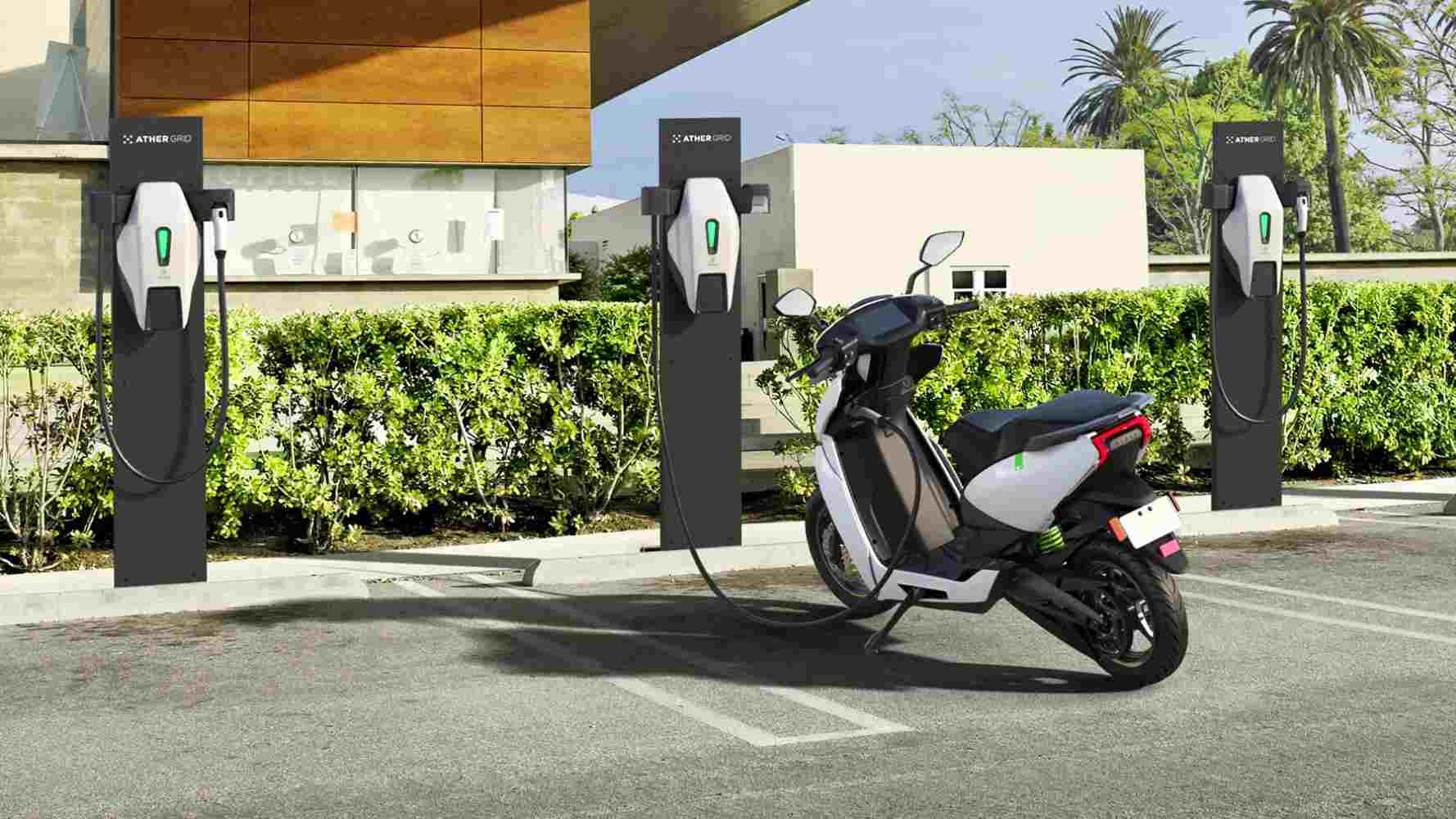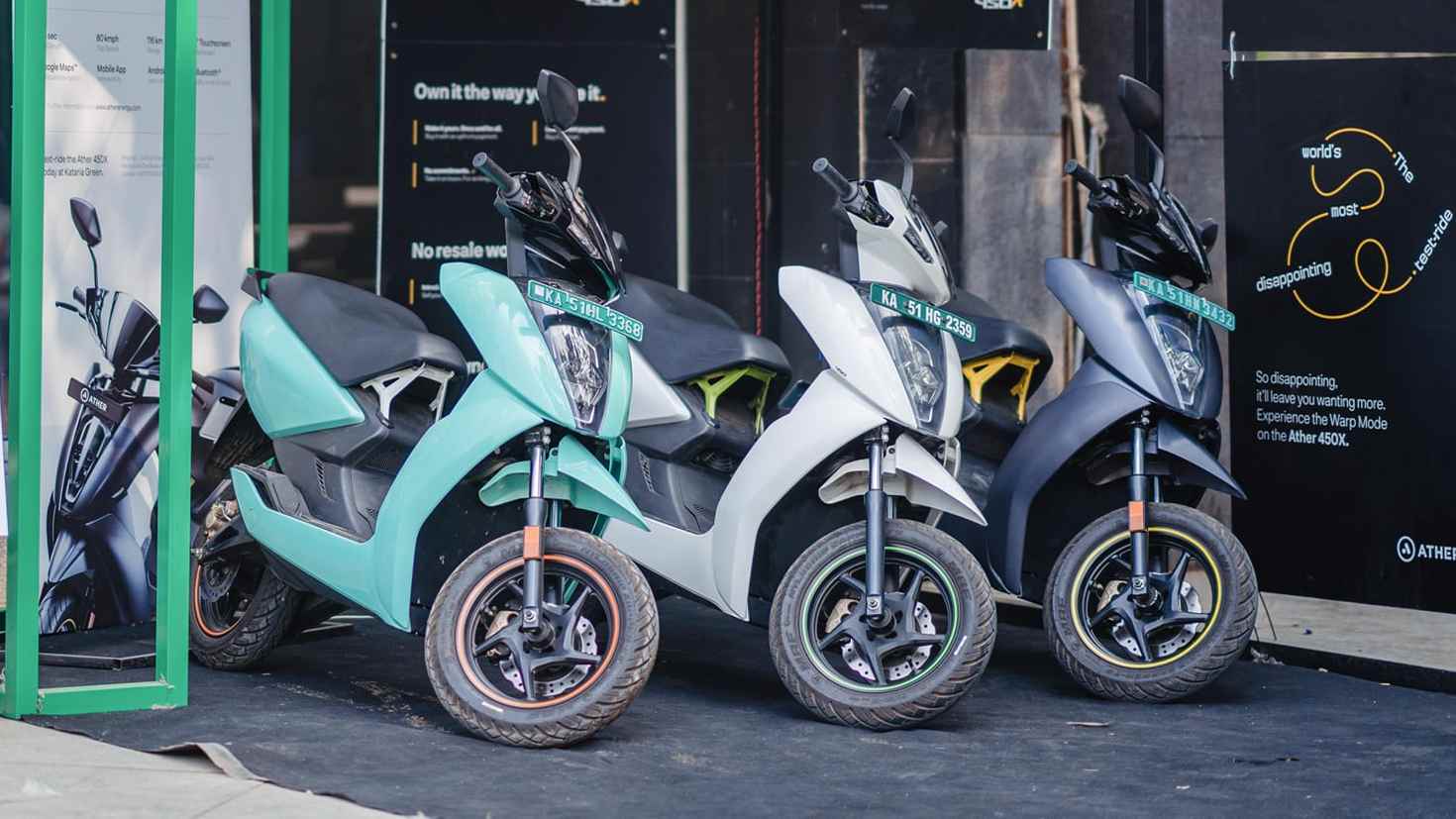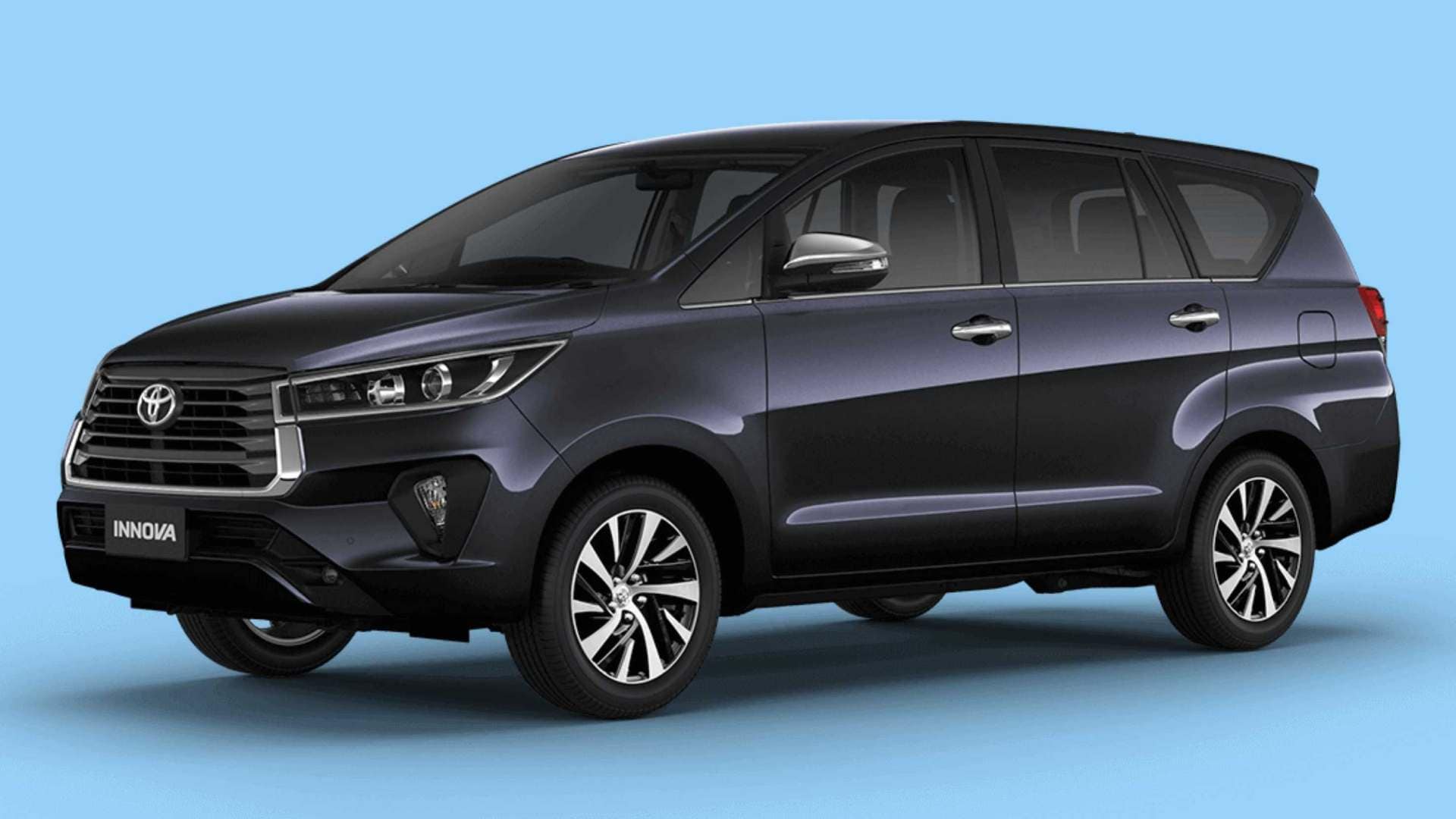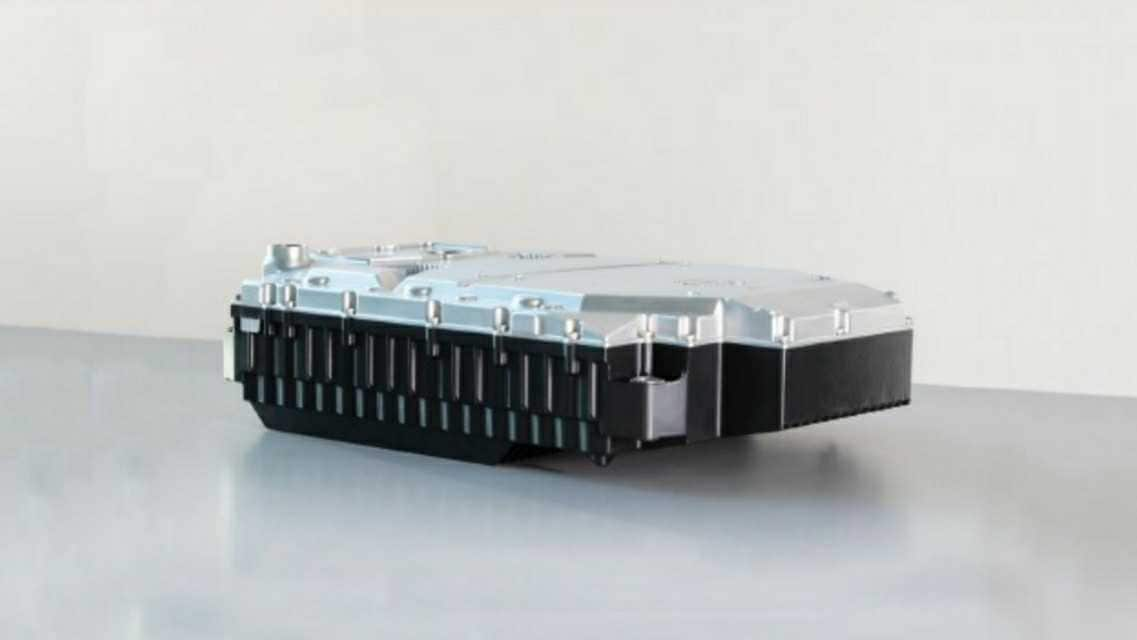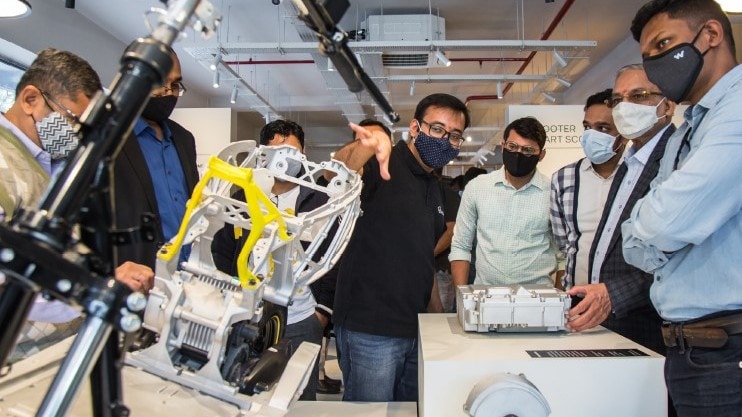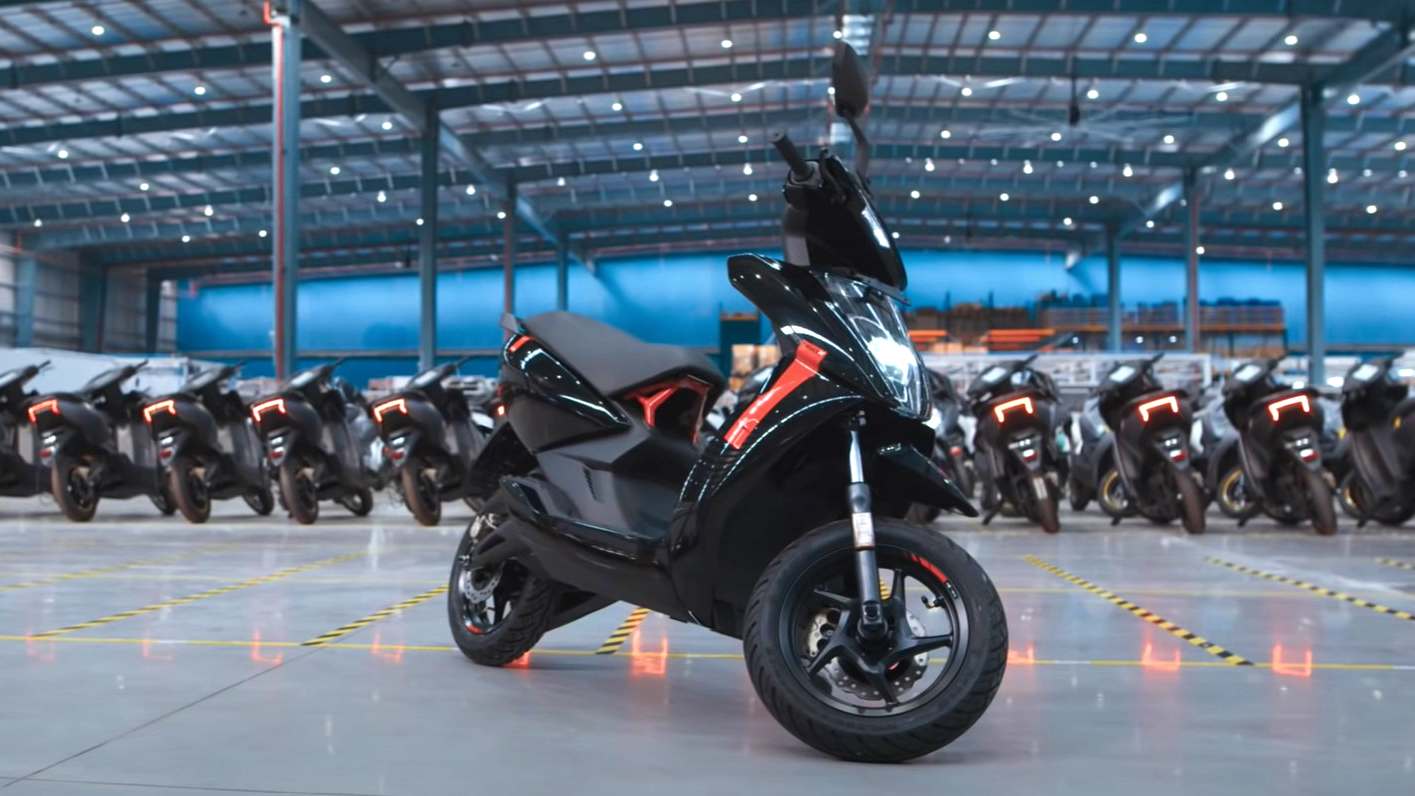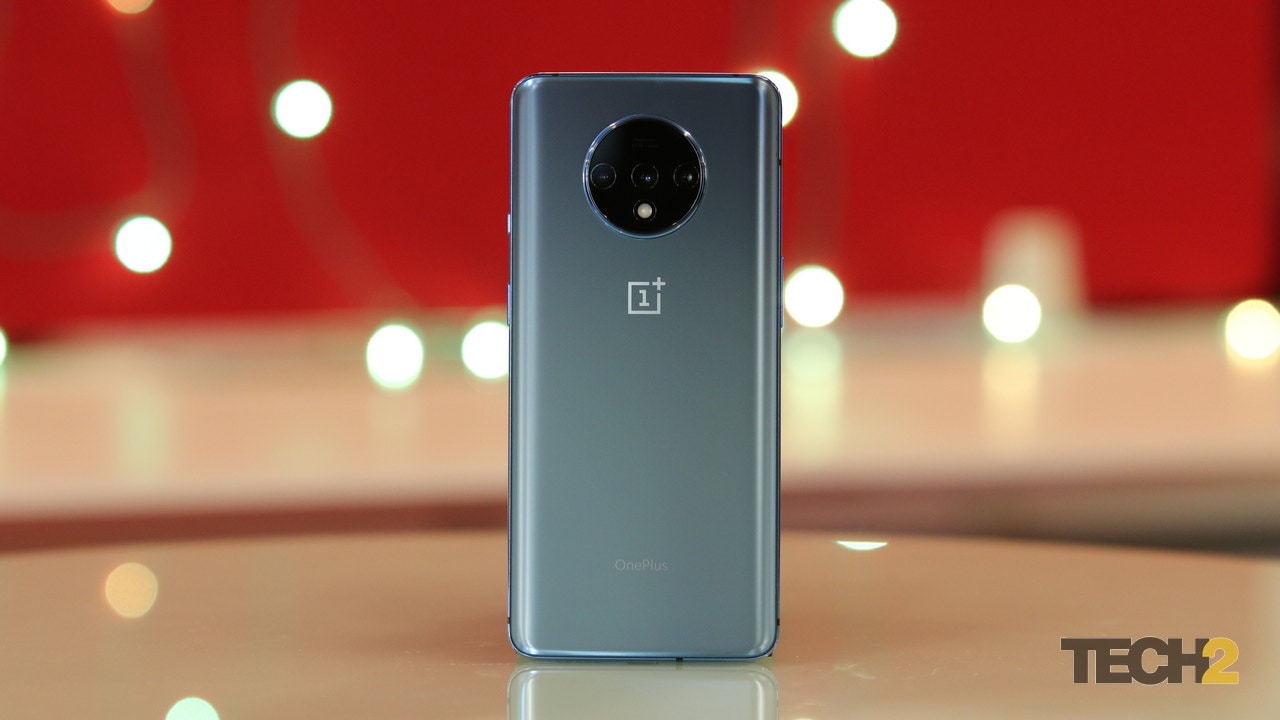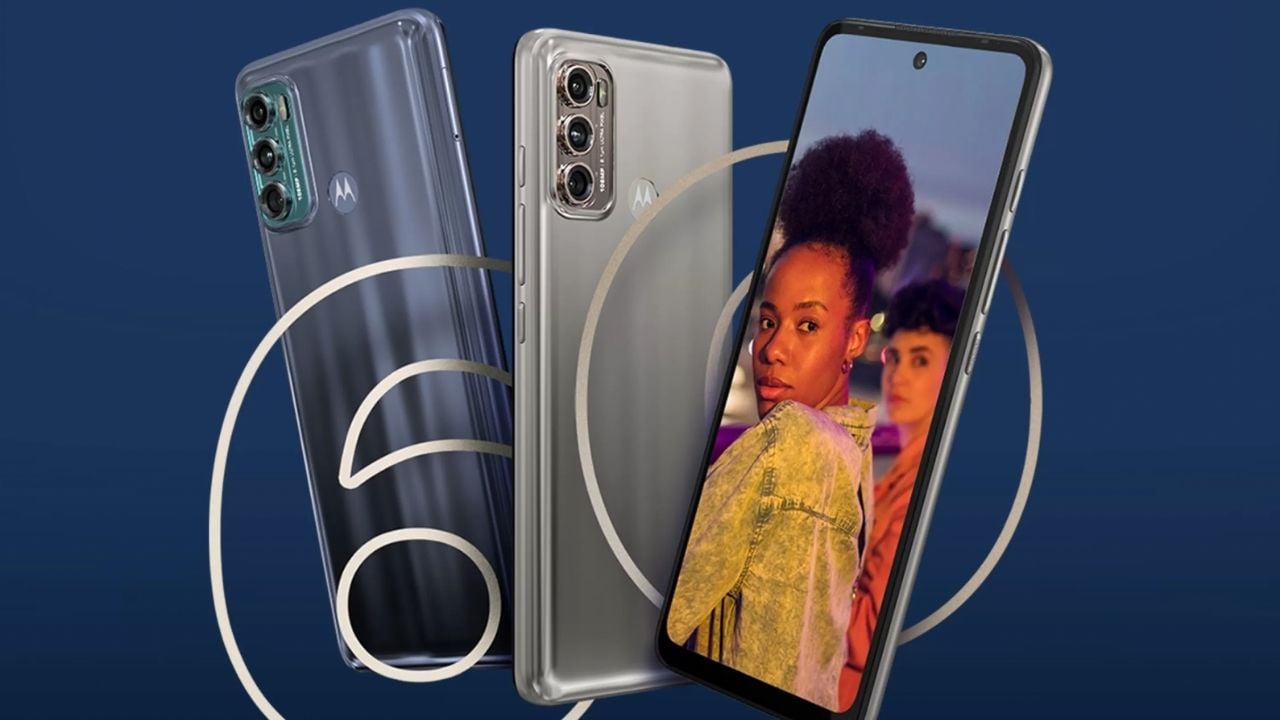Aadi NairJul 28, 2021 17:50:53 IST
Shortly after the COVID-19 lockdown began, I found myself all alone in my Mumbai apartment. My roommates had all left, for some reason or the other, and it was just me. The first couple of weeks were easy, I was living my best life and channeling my inner Kevin McAllister with gleeful abandon, eating ice-cream in the middle of the day with not a care in the world. The next couple of weeks, however, were… difficult. There was a point at which my little 2BHK abode, which, on usual days, felt stifling and small, started to seem infinite. The walls began to loom over me, and the walk from the front door to my kitchen felt like a marathon.
I was slowly beginning to succumb to a strange brand of melancholy, the kind that only something like a global pandemic can bring about. In my desperation to exit this sinking quicksand feeling, I tried all sorts of distractions. I watched films that everyone had raved about, television shows that frequently featured on “Top 10 shows to watch if you’re not an uncultured swine” lists, even going so far as to — and I shudder to say this out loud — listen to a podcast or two. None of that really worked, and my salvation would finally come whilst trawling through the bargain bin offers on the PlayStation store, in the shape of F1 2019.
Prior to this point, I’d never played an F1 game before, despite being an on-again, off-again fan of the actual sport. Also, my utter incompetence when it comes to racing games might have something to do with why I’d never dipped my toes into Codemasters’ decades-long series. In fact, just minutes after booting up F1 2019, I was ready to quit. I was expecting a light, carefree racing experience, but instead, what I got was an ultra-serious, simulator-esque ordeal, with all manners of strange buttons and technical jargon being thrown my way. Despite this initial reluctance, I persevered, and over the next month or so, I obsessively played my way through pretty much everything the game had to offer, and in the process, somehow managed to stave off the lockdown blues (Just to make it clear, I’m not advocating for F1 2019 to replace any of the tools you would use to improve your mental health, please try therapy, it works wonders).
[embedded content]
So of course, a year later, when the opportunity came to review the successor to the game that got me through the first few months of the pandemic, I lunged at it with both hands. After having played it for a week or so, I’ve come to the realisation that despite having sunk many, many hours of my life into this game, I have somehow not gotten any better. I might actually be worse at it than I was a year ago. The game, on the other hand, has improved significantly.
Gameplay and Graphics
While the gameplay of F1 2021 is not massively different from its predecessors, there are a few noteworthy additions that make it a more appealing and polished game than those that came before it. Chief among those is the addition of Braking Point, a “Drive to Survive”–inspired game mode that attempts to throw back the curtain and expose the seedy underbelly of a sport that features 20 millionaires driving around in circles really fast. We’ll talk about Braking Point in detail a little later, but F1 2021 is not all about huge updates and big overhauls.
There have also been a number of smaller, more subtle improvements. For an inept hand like myself, the assists, in particular, were one improvement that stood out to me almost immediately. Having little green and red arrows to tell you when to brake and when to accelerate away is really useful, and while these features have been a part of the F1 series for a while now, you do have a slightly larger degree of control over them now.
The game also integrates the DualSense controller’s ability to adjust the tension in the trigger buttons, but if you didn’t know that before you started playing, you might not realise it at all. In fact, I only remembered that the game was supposed to use adaptive triggers when I was re-watching a teaser trailer that had come out in the build-up to the game’s release. Turns out, there are different levels of sensitivity that you can apply to the triggers, and the effects of the default level are not very noticeable. Once I had amped it up a little, I really felt a lot of feedback from the controls, and it made racing a lot more enjoyable by adding a heightened level of tactile interaction.
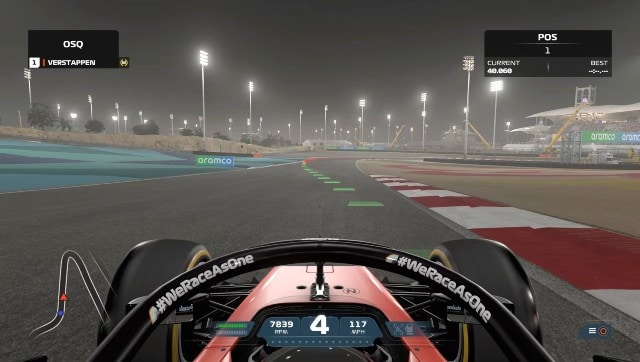
The swirling sand and misty Bahrain nights took me right back to my childhood. Screen grab from F1 2021
When it comes to the graphics, there’s been a marked improvement in quality, though I suspect that might have more to do with the capabilities of the PlayStation 5 than it has to do with the game itself. Opting to race in rainy conditions will dramatically transform the visuals, with the almost photorealistic soaked asphalt, crunchy gravel and overcast skies really adding to the immersive quality of the experience. In contrast, when racing on circuits like Bahrain, the swirling sand and bright, oppressive sunlight really replicate what it’s like to be at that particular track, so much so that while playing the game, I was overcome with nostalgia, thinking back to when a 10-year-old me got a chance to watch the F1 at the Bahrain International Circuit.
Braking Point – The Star Attraction
In Braking Point, F1’s new story-focused mode, you’re given the opportunity to relive the experience of being a pimply lad in your 20s, trying to make it in a big bad world, through the lens of one Aiden Jackson. Jackson is a strong favourite to win the F2 title, and your first race as Aiden Jackson is the championship-winning season finale that propels you to a seat in Formula 1. Soon after, you’re forced to come to grips with the fact that it’s not all stars and sunshine in the big leagues, and that underneath the bells and whistles, there’s a viciously competitive system that’s out to get you.
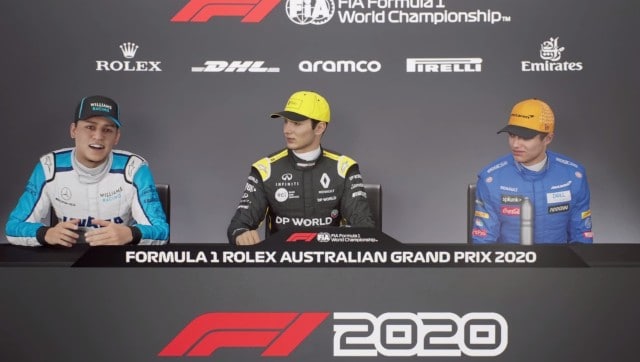
Aiden Jackson (L) does his first F1 press conference. Screen grab from F1 2021
Among the chief antagonists of this story are your vaguely older teammate Casper Akkerman (really, he could be either 28 or 50) who despises you for being a young hotshot talent, and a very charismatic rival Devon Butler, who just seems to appear out of thin air at the very worst moments possible to sow seeds of doubt in your mind.
Now, there’s nothing particularly new or interesting about this storyline in and of itself. It does seem like a slightly plagiarised reincarnation of the Alex Hunter story from FIFA games of the past, even featuring almost identical motivations for the primary character and the antagonists. How it does improve on that, though, is in the execution.
Each character is fleshed out to just the right point, where we neither skim over their reasons for doing what they do, nor dive into their past in exhaustive detail. The interactions between characters, especially those told through the cutscenes, are all paced well, and at no point does the story feel like it’s dragging. The only character whose backstory I wasn’t fully satisfied with was Akkerman, whose past exploits on the circuit are mentioned only in passing, but it’s not something that hampered my enjoyment of the story.
Speaking of Akkerman, another gameplay feature that I really enjoyed was that Braking Point allowed you to race as Akkerman in some races that had were more meaningful to his storyline than they perhaps were to the protagonist. This truly gives players an ability to walk a mile in someone else’s shoes, and adds a further level of nuance to this story. It gives a sense of authenticity to the world that the game is trying to bring to your television screens.
This world is also expanded upon by little touches like the mails you get in your inbox, as well as a social media feed of sorts that you can view on your virtual phone. Some of these are quite intriguing, and often form little side stories of their own, over the course of several emails. A significant portion of the story is also told through the medium of telephones, with Aiden being constantly plagued by his mum and team liaison/mediator Brian Doyle.
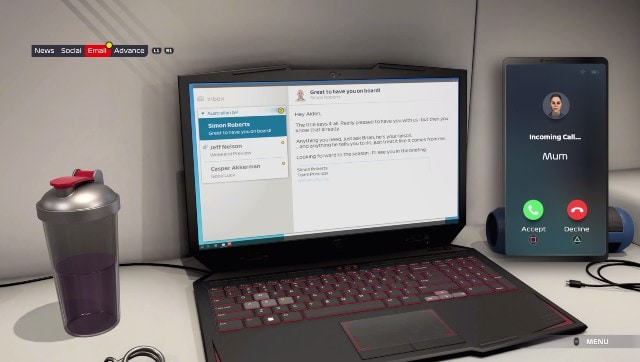
It’s just like EA to make me check emails even when I’m playing video games. Like I don’t get enough of that at work. If my boss is reading this, I apologise, that was just a joke, I love getting emails. (not really though) I also love getting calls from my mum. Screen grab from F1 2021
I do have a couple of gripes about Braking Point. To begin with, since the cutscenes are so visually appealing and well-written, there are occasions outside the cutscenes in which the characters look a little like they’ve been possessed by a demon, with deadpan expressions and eyes that are cold and calculating. Now, if there’s a murder mystery side plot in the pipeline, this is more than acceptable, but otherwise, it just takes away from the overall polish of the game. Secondly, Braking Point is short, even for a novice like me who needs four or five attempts to complete every race.
Career
The career mode allows you to play either as a racer (Driver mode), or as a racer/owner/manager (My Team mode) who juggles the responsibilities of being the man in charge in addition to having to race every weekend. You can play the career mode all by yourself, or, if you have a very, very patient friend, which I do not, you can play it in CO-OP mode, which allows you and your friend to play as teammates or rivals.
When you play the “My Team” version of career mode, you’re given a much larger degree of control over the team, and you can dictate proceedings according to your wishes. I found it quite entertaining, both in terms of story and gameplay, and I got a real kick out of acting like the big boss man. It was a little daunting, however, and required a fair bit of googling on my part to understand the progression systems involved in levelling up your engines and gearboxes. Of course, I admittedly have a very superficial knowledge of such things, and someone who is more aware of the inner workings of the sport will likely love the technical side of it.

Here’s just some of the different aspects of your team and vehicle that you can tinker around with when playing My Team. Screen grab from F1 2021
That’s not me though. I’m no geek. I’m fast, I’m furious, and I live to race baby. Hmm, I feel like the ‘baby’ was a bit too much, but my point stands. I wasn’t interested in the makeup of the car or in having to decide what gearbox I was going to use, I just want to smoke fools on the track, and playing the “Driver” mode is perfect for that. You can pick from any team on the F1 and F2 grids, and then compete over the course of a season, or even half a season, if you want. I started out with an F2 side, and found that the journey towards qualifying for the Formula 1 was pretty engaging.
Multiplayer
There are a number of ways in which you can experience the joy of multiplayer racing, from online sessions to local split-screen races. The online races work well enough, but it took me very long to find players to race against, with wait times of over five minutes on some occasions. Perhaps some of that can be attributed to this still being a very new game, and it will likely improve in due time. I also prefer racing with collisions turned off so that other racers are not tangible entities that can make physical contact with me. I personally feel like it’s much less chaotic, and ensures you don’t fly off the tracks/have your front wing fall off every time you hit someone, but it does also make the race a teeny tiny bit less entertaining.
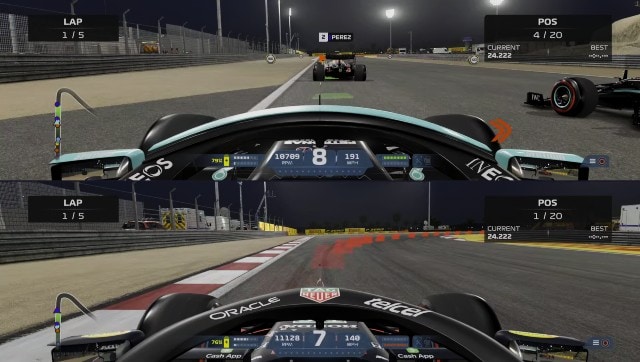
Here I am, playing against my brother, handing him an effortless and graceful beatdown. Screen grab from F1 2021
The multiplayer mode in which I had the most fun, however, was the local split-screen multiplayer, in which you can face off against someone sitting right next to you. Over the course of the past week, my brother and I have waged war on several occasions, and I have emerged victorious on almost every occasion (I let him win one time out of the goodness of my heart).
Grand Prix/Time Trial
These two modes are essentially the most barebones modes available, and they allow players to quickly jump into action whenever they so desire, cutting out any and all semblance of story or plot. They’re great for learning how the game works, and challenging yourself to better your previous performances time and time again, should you be so inclined. With the time trial mode, you can also experience every track that the game has to offer without having to complete all of them first.

You can choose from multiple different tracks in the Time Trial mode even if you haven’t beaten them before. Screen grab from F1 2021
TL;DR: F1 2021 is a must-have for fans of the genre, as it builds upon an already robust series with numerous upgrades. If you’re looking for a more fun, light-hearted racing experience, however, this is probably not for you.
Game reviewed on PlayStation 5. Review code provided by the publisher.







